Abstract
1. Studies were made of the electromyogram (EMG) patterns associated with the performance of visually guided, step-tracking arm movements by normal humans. Subjects were instructed to make movement either 'accurately', 'as fast as possible' or 'fast and accurately'. Movements of 16, 32, 48 and 64 deg of arc were made with each instruction. Movements had durations of approximately 250-600 msec. 2. A 'triphasic' pattern of EMG activity was associated with all movements in this study. All bursts in this pattern were more clearly defined in faster movements whether the increased speed of movement was a result of increased movement amplitude or of the instruction-related 'intent' of the subject. 3. The magnitudes of the two agonist EMG bursts showed identical linear dependencies on movement amplitude. The slope of this relation was instruction-dependent, being greatest for 'fast' and least for 'accurate' movements. 4. The duration and time of onset of the initial agonist burst relative to the start of the movement were not dependent on movement amplitude or on instruction. In contrast, the time of onset of the second agonist burst depended on both movement amplitude and instruction, occurring earlier when movements were made faster. 5. The magnitude of the antagonist activity was instruction- but not amplitude-dependent. Duration and onset of this burst varied with both instruction and movement amplitude.
Full text
PDF
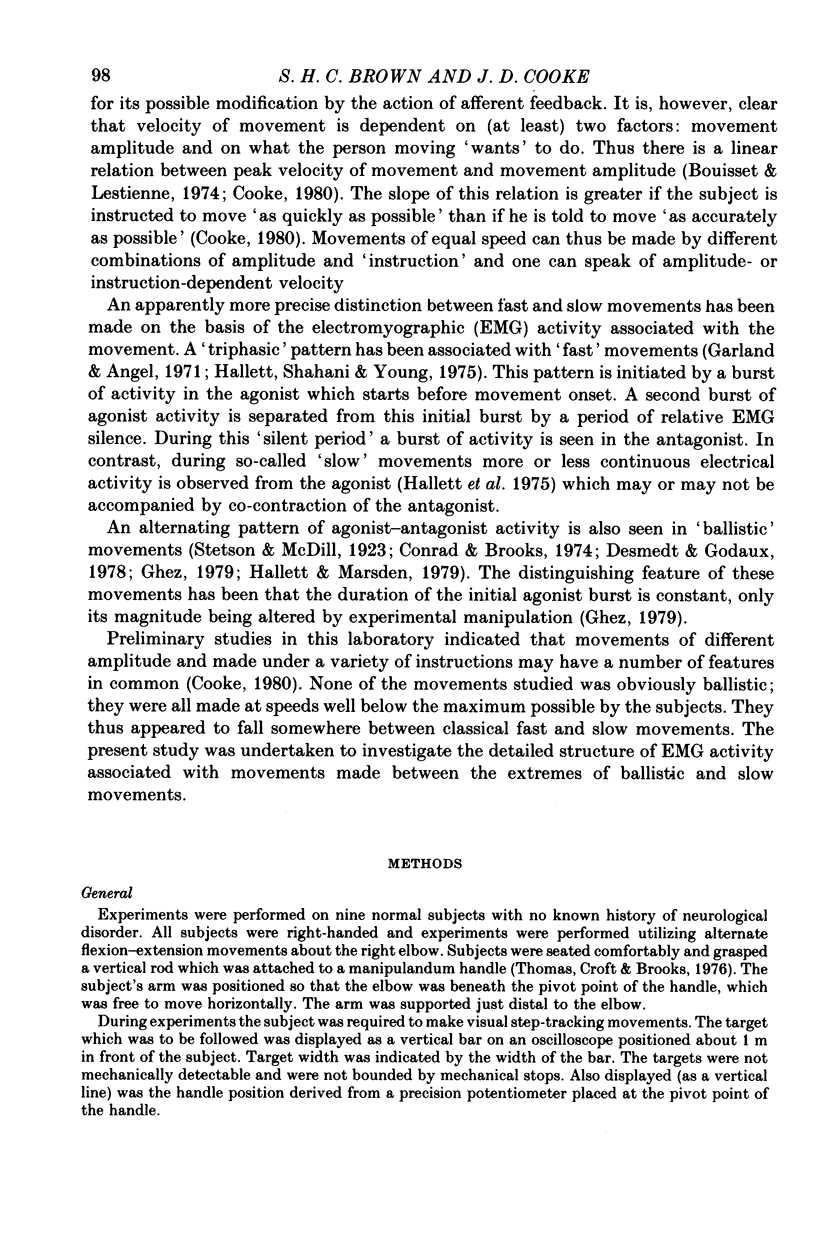
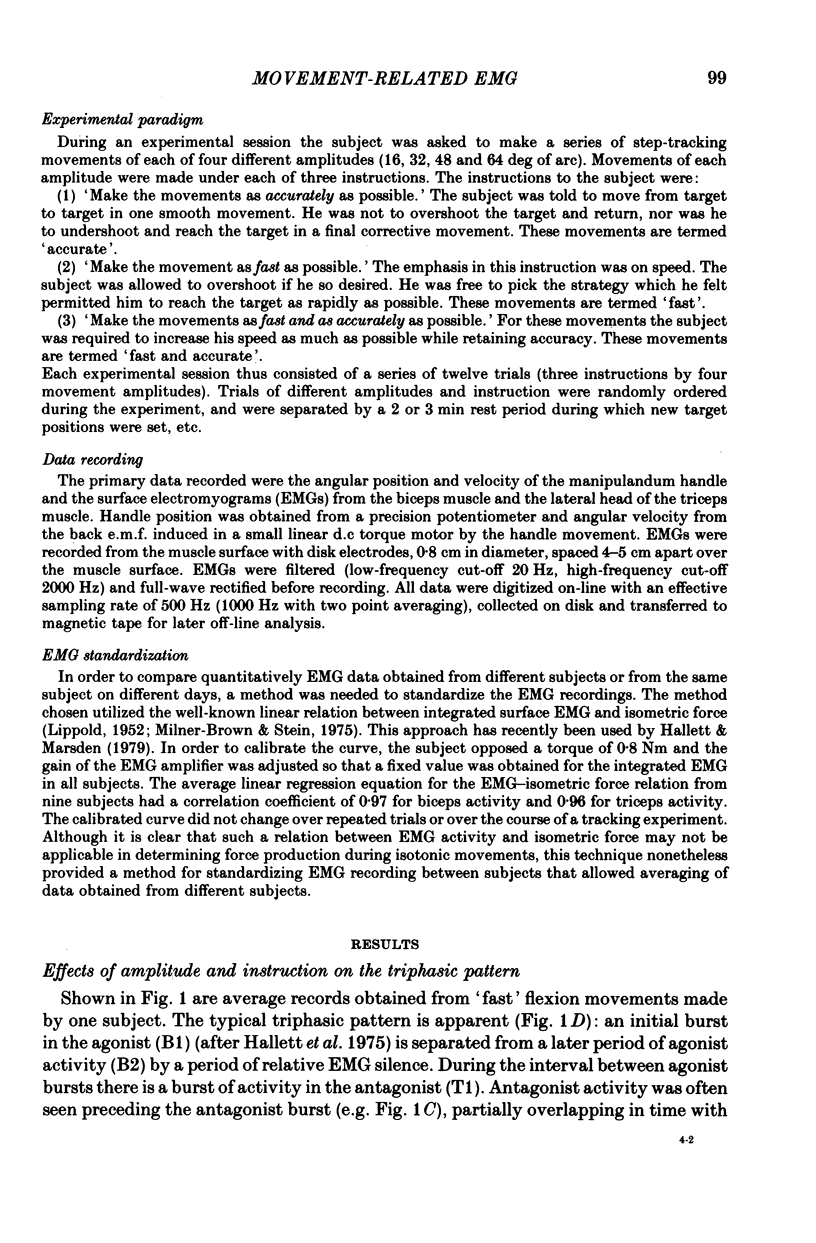
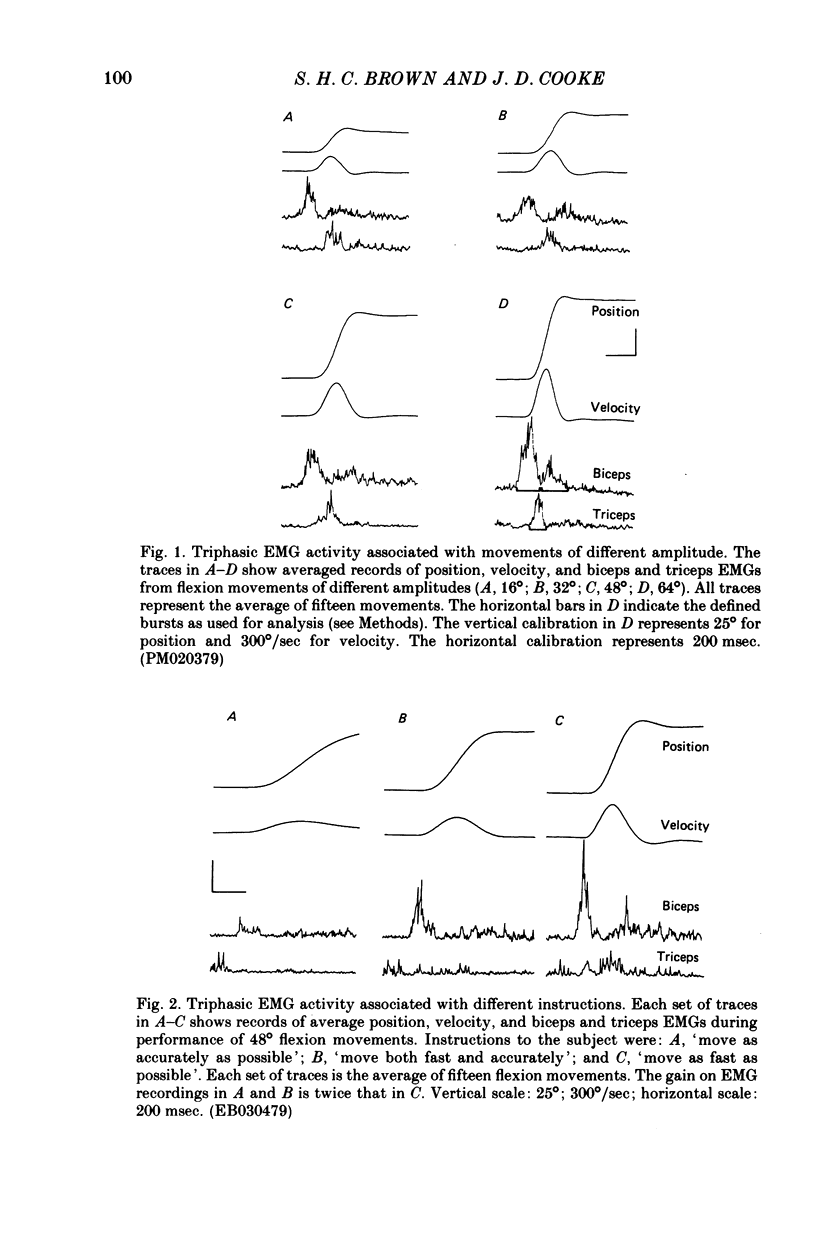
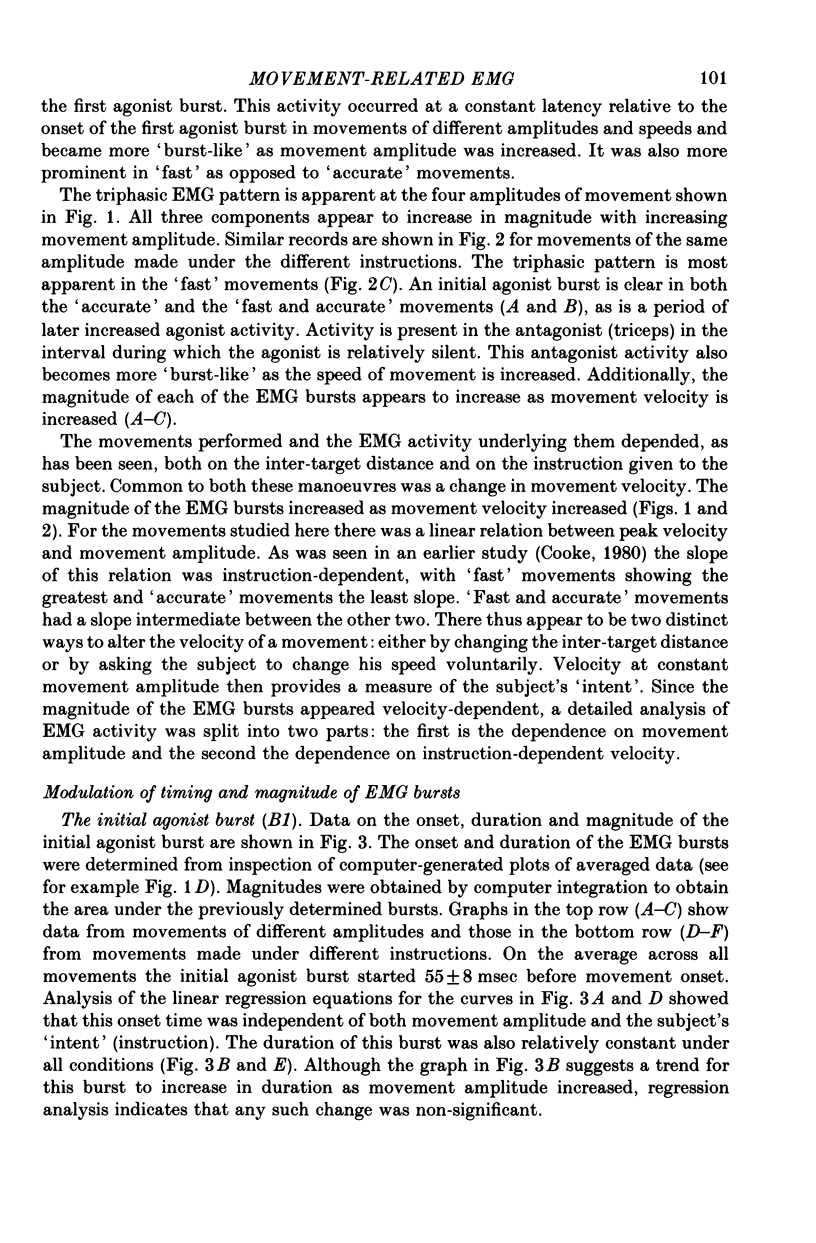
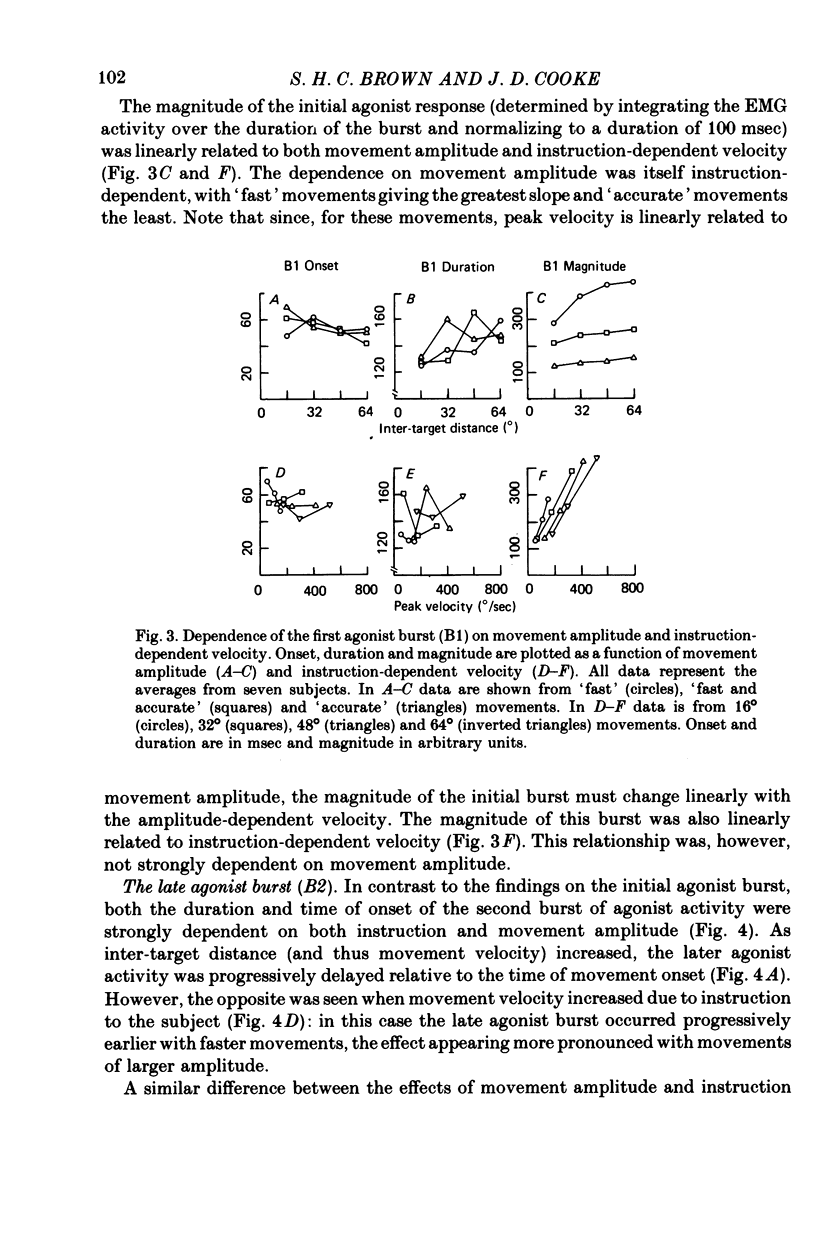
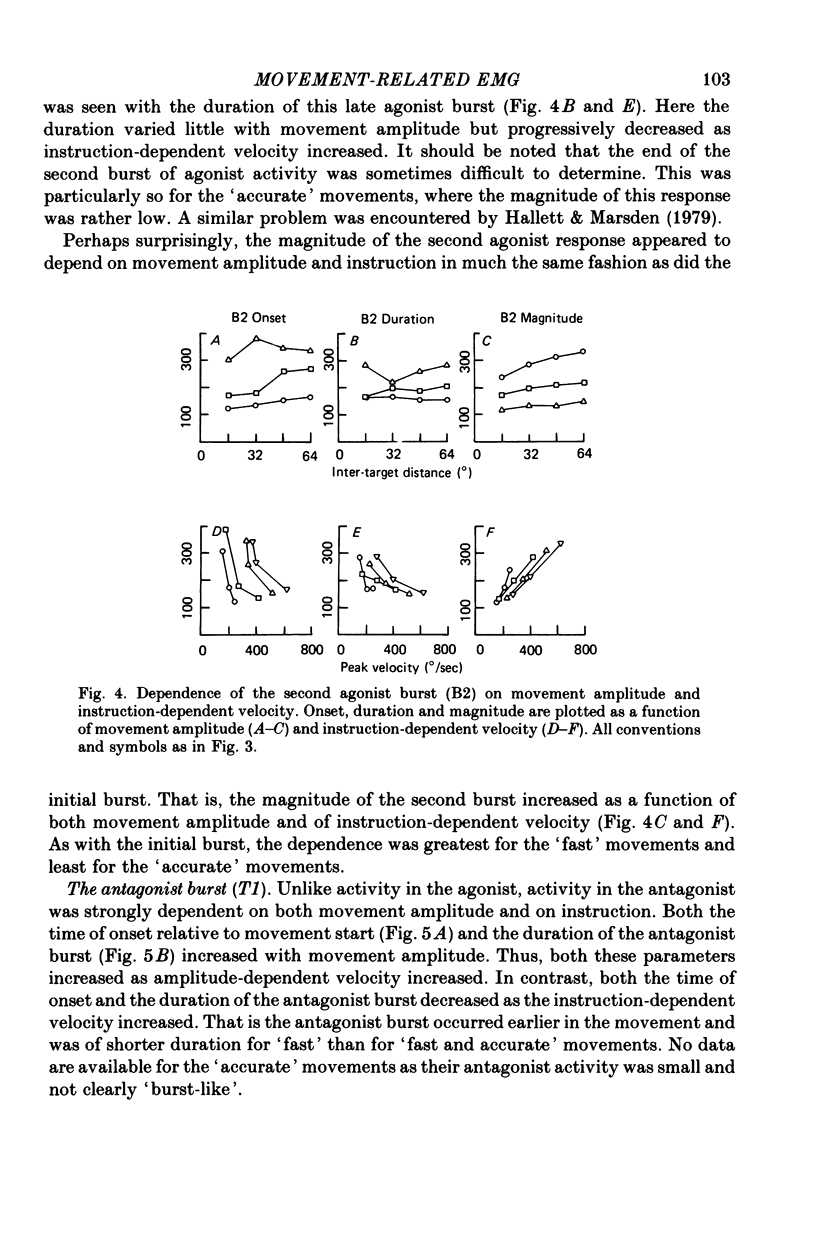
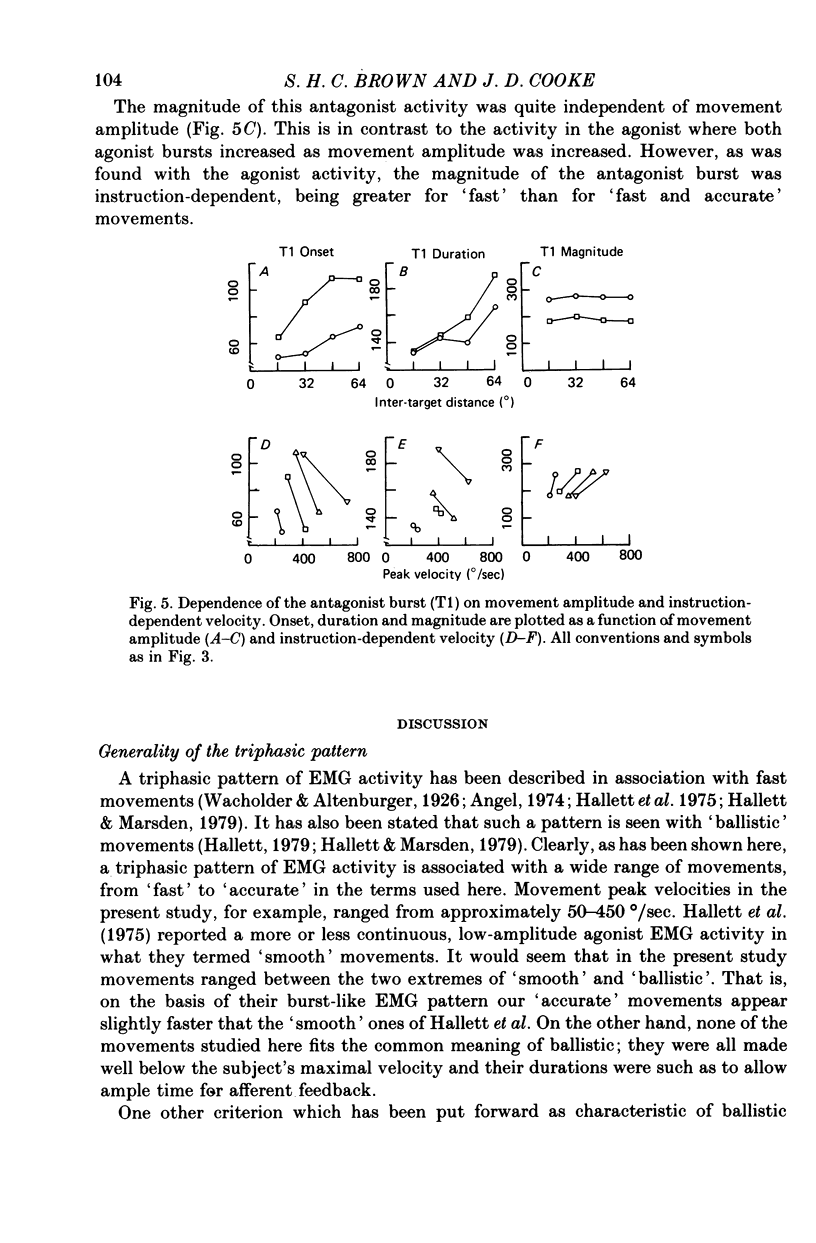
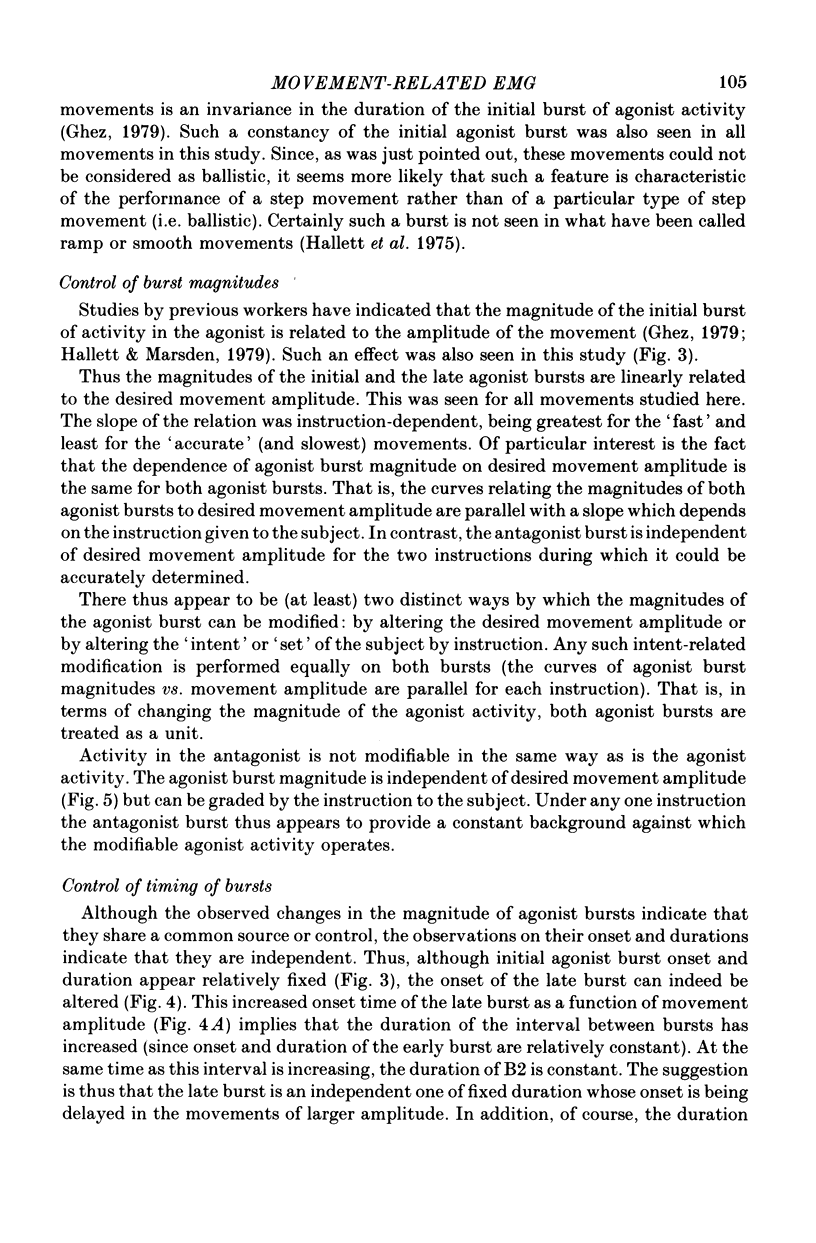
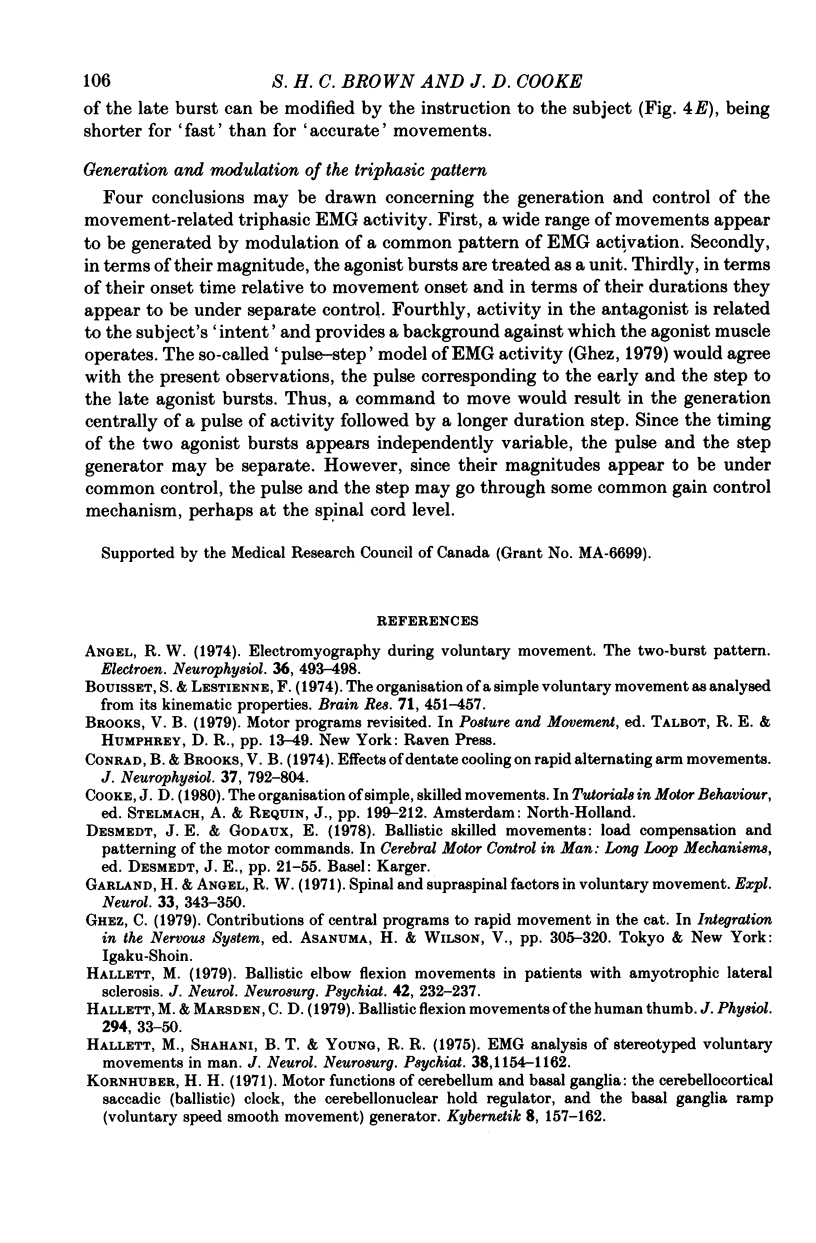

Selected References
These references are in PubMed. This may not be the complete list of references from this article.
- Angel R. W. Electromyography during voluntary movement: the two-burst pattern. Electroencephalogr Clin Neurophysiol. 1974 May;36(5):493–498. doi: 10.1016/0013-4694(74)90206-5. [DOI] [PubMed] [Google Scholar]
- Bouisset S., Lestienne F. The organisation of a simple voluntary movement as analysed from its kinematic properties. Brain Res. 1974 May 17;71(2-3):451–457. doi: 10.1016/0006-8993(74)90988-3. [DOI] [PubMed] [Google Scholar]
- Conrad B., Brooks V. B. Effects of dentate cooling on rapid alternating arm movements. J Neurophysiol. 1974 Jul;37(4):792–804. doi: 10.1152/jn.1974.37.4.792. [DOI] [PubMed] [Google Scholar]
- Garland H., Angel R. W. Spinal and supraspinal factors in voluntary movement. Exp Neurol. 1971 Nov;33(2):343–350. doi: 10.1016/0014-4886(71)90026-4. [DOI] [PubMed] [Google Scholar]
- Hallett M. Ballistic elbow flexion movements in patients with amyotrophic lateral sclerosis. J Neurol Neurosurg Psychiatry. 1979 Mar;42(3):232–237. doi: 10.1136/jnnp.42.3.232. [DOI] [PMC free article] [PubMed] [Google Scholar]
- Hallett M., Marsden C. D. Ballistic flexion movements of the human thumb. J Physiol. 1979 Sep;294:33–50. doi: 10.1113/jphysiol.1979.sp012913. [DOI] [PMC free article] [PubMed] [Google Scholar]
- Hallett M., Shahani B. T., Young R. R. EMG analysis of stereotyped voluntary movements in man. J Neurol Neurosurg Psychiatry. 1975 Dec;38(12):1154–1162. doi: 10.1136/jnnp.38.12.1154. [DOI] [PMC free article] [PubMed] [Google Scholar]
- Kornhuber H. H. Motor functions of cerebellum and basal ganglia: the cerebellocortical saccadic (ballistic) clock, the cerebellonuclear hold regulator, and the basal ganglia ramp (voluntary speed smooth movement) generator. Kybernetik. 1971 Apr;8(4):157–162. doi: 10.1007/BF00290561. [DOI] [PubMed] [Google Scholar]
- LIPPOLD O. C. J. The relation between integrated action potentials in a human muscle and its isometric tension. J Physiol. 1952 Aug;117(4):492–499. doi: 10.1113/jphysiol.1952.sp004763. [DOI] [PMC free article] [PubMed] [Google Scholar]
- Milner-Brown H. S., Stein R. B. The relation between the surface electromyogram and muscular force. J Physiol. 1975 Apr;246(3):549–569. doi: 10.1113/jphysiol.1975.sp010904. [DOI] [PMC free article] [PubMed] [Google Scholar]
- Thomas J. S., Croft D. A., Brooks V. B. A manipulandum for human motor studies. IEEE Trans Biomed Eng. 1976 Jan;23(1):83–84. doi: 10.1109/tbme.1976.324624. [DOI] [PubMed] [Google Scholar]


